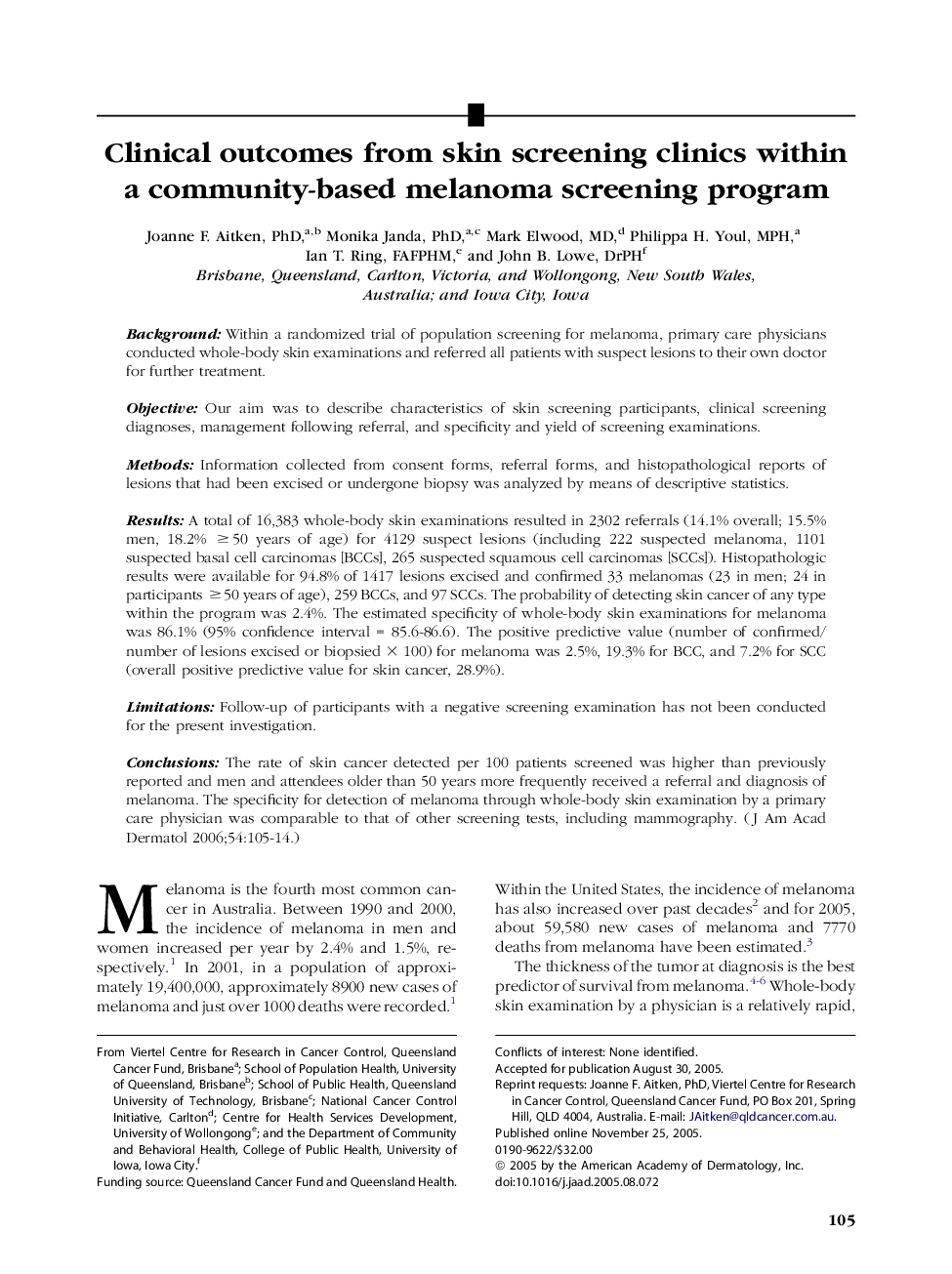| Article ID | Journal | Published Year | Pages | File Type |
|---|---|---|---|---|
| 3210896 | Journal of the American Academy of Dermatology | 2006 | 10 Pages |
BackgroundWithin a randomized trial of population screening for melanoma, primary care physicians conducted whole-body skin examinations and referred all patients with suspect lesions to their own doctor for further treatment.ObjectiveOur aim was to describe characteristics of skin screening participants, clinical screening diagnoses, management following referral, and specificity and yield of screening examinations.MethodsInformation collected from consent forms, referral forms, and histopathological reports of lesions that had been excised or undergone biopsy was analyzed by means of descriptive statistics.ResultsA total of 16,383 whole-body skin examinations resulted in 2302 referrals (14.1% overall; 15.5% men, 18.2% ≥50 years of age) for 4129 suspect lesions (including 222 suspected melanoma, 1101 suspected basal cell carcinomas [BCCs], 265 suspected squamous cell carcinomas [SCCs]). Histopathologic results were available for 94.8% of 1417 lesions excised and confirmed 33 melanomas (23 in men; 24 in participants ≥50 years of age), 259 BCCs, and 97 SCCs. The probability of detecting skin cancer of any type within the program was 2.4%. The estimated specificity of whole-body skin examinations for melanoma was 86.1% (95% confidence interval = 85.6-86.6). The positive predictive value (number of confirmed/number of lesions excised or biopsied × 100) for melanoma was 2.5%, 19.3% for BCC, and 7.2% for SCC (overall positive predictive value for skin cancer, 28.9%).LimitationsFollow-up of participants with a negative screening examination has not been conducted for the present investigation.ConclusionsThe rate of skin cancer detected per 100 patients screened was higher than previously reported and men and attendees older than 50 years more frequently received a referral and diagnosis of melanoma. The specificity for detection of melanoma through whole-body skin examination by a primary care physician was comparable to that of other screening tests, including mammography.
